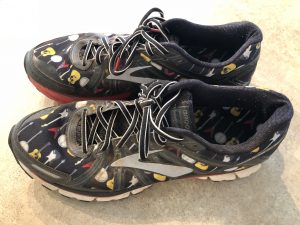It’s #ThrowbackThursday and I was wondering, “Who started Throwback Thursday anyway?” So I thought I’d look it up.  According to Wikipedia, Sports Illustrated attributes the original Throwback Thursday to a blog called Nice Kicks. In 2006 they began the ritual of posting pictures of old basketball sneakers on Thursdays and it somehow stuck.
According to Wikipedia, Sports Illustrated attributes the original Throwback Thursday to a blog called Nice Kicks. In 2006 they began the ritual of posting pictures of old basketball sneakers on Thursdays and it somehow stuck.
It did more than stick, it took off. Now, people around the world know to post old, nostalgic pictures and quotes on #ThrowbackThursday.
But here’s the thing. I can find a website called NiceKicks.com but I don’t really see them taking credit for #ThrowbackThursday. Maybe I didn’t dig too deeply, but it would seem to me if you were responsible for changing the lives of so many people in a somewhat positive way, you’d want people to know about it.
Maybe I’m on the wrong site. Maybe the site doesn’t exist any longer. Or maybe, just maybe, Wikipedia and Sports Illustrated have it wrong. Fact is, with a movement like this, who really knows who started it and perhaps no one really cares either.
But it brings up a good point. If you are fortunate enough to start a movement, even if you perhaps borrowed it from someone else, you’ll need to be certain to let people know about it, especially if a credible source is doing everything they can to credit you for it.
If you build a better mousetrap it doesn’t matter if no one knows about it except for the one poor mouse who finds it unexpectedly. And just think of all the people who could be helped by your product or service that won’t know about it if you don’t tell them.
#ThrowbackThursday is a great example of how something can take off. It has no built-in ideal customer or constituency that receives value from it and yet so many do. But, it has no owner either (that I can tell).
Remember, people shouldn’t have to dig too deeply to find the thing or things you’ve done to improve the lives of people you serve. If you launch something special (like your business), make certain to retain ownership, tell everyone you can about it, and have a way for them to share it with their circle. Then, maybe, you’ll have your own cultural phenomenon and hashtag.
